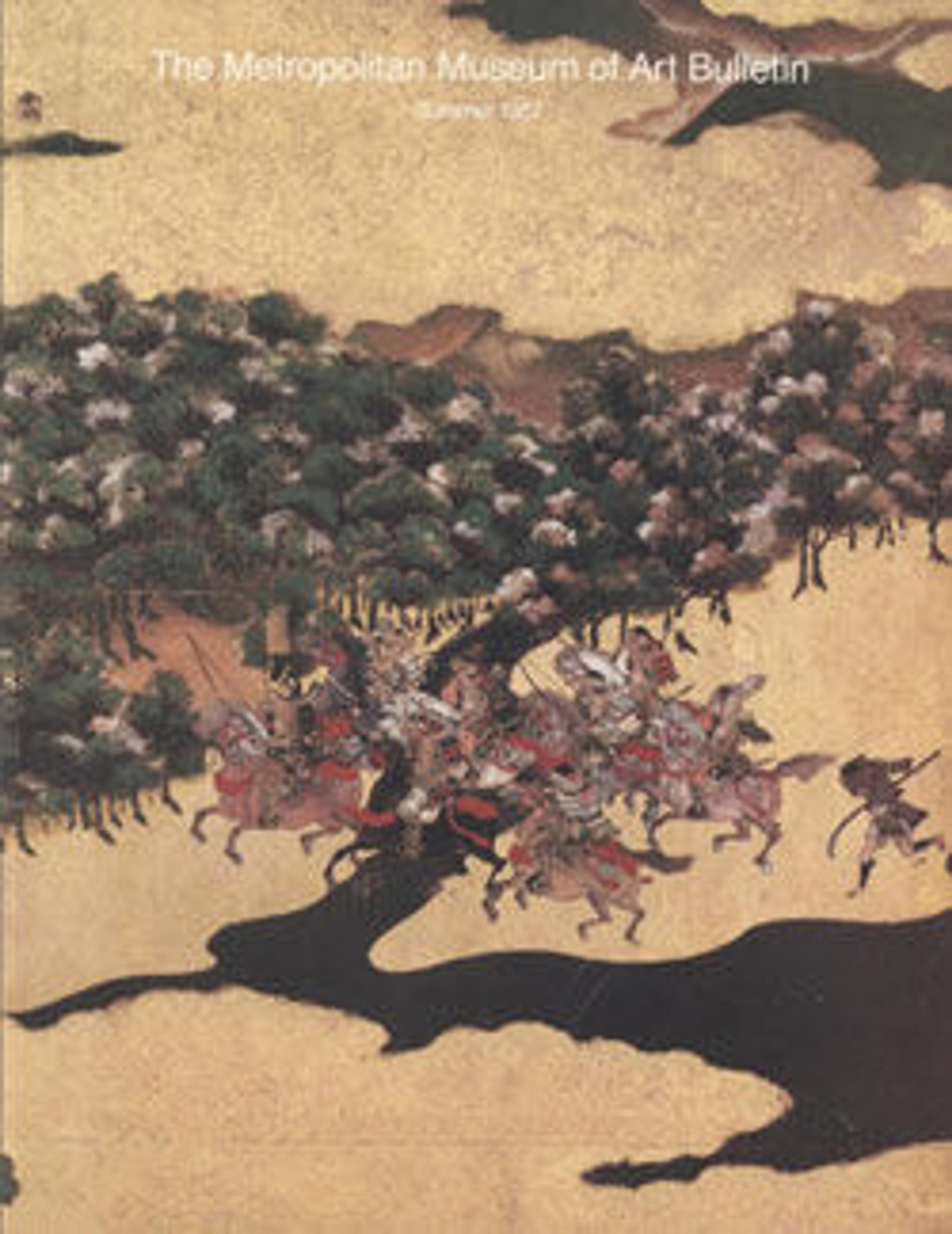Haniwa (hollow clay sculpture) of a boar
Earthen tomb mounds, common burial practice on the Asian continent, were brought to Japan around the third century. Haniwa (clay cylinders)—at times numbering in the thousands—were placed in rows or scattered outside these tombs. Sculptors sometimes topped cylinders with figures or animals, themselves often almost abstract in aesthetic. The shape of this poignant example recalls an infant boar’s large snout, curled body, and bound limbs.
Artwork Details
- 埴輪猪
- Title: Haniwa (hollow clay sculpture) of a boar
- Period: Kofun period (ca. 300–710)
- Date: 5th century
- Culture: Japan
- Medium: Earthenware
- Dimensions: H. 3 3/4 in. (9.5 cm); W. 2 in. (5.1 cm); L. 4 7/8 in. (12/4 cm)
- Classification: Sculpture
- Credit Line: The Harry G. C. Packard Collection of Asian Art, Gift of Harry G. C. Packard, and Purchase, Fletcher, Rogers, Harris Brisbane Dick, and Louis V. Bell Funds, Joseph Pulitzer Bequest, and The Annenberg Fund Inc. Gift, 1975
- Object Number: 1975.268.418
- Curatorial Department: Asian Art
More Artwork
Research Resources
The Met provides unparalleled resources for research and welcomes an international community of students and scholars. The Met's Open Access API is where creators and researchers can connect to the The Met collection. Open Access data and public domain images are available for unrestricted commercial and noncommercial use without permission or fee.
To request images under copyright and other restrictions, please use this Image Request form.
Feedback
We continue to research and examine historical and cultural context for objects in The Met collection. If you have comments or questions about this object record, please complete and submit this form. The Museum looks forward to receiving your comments.
